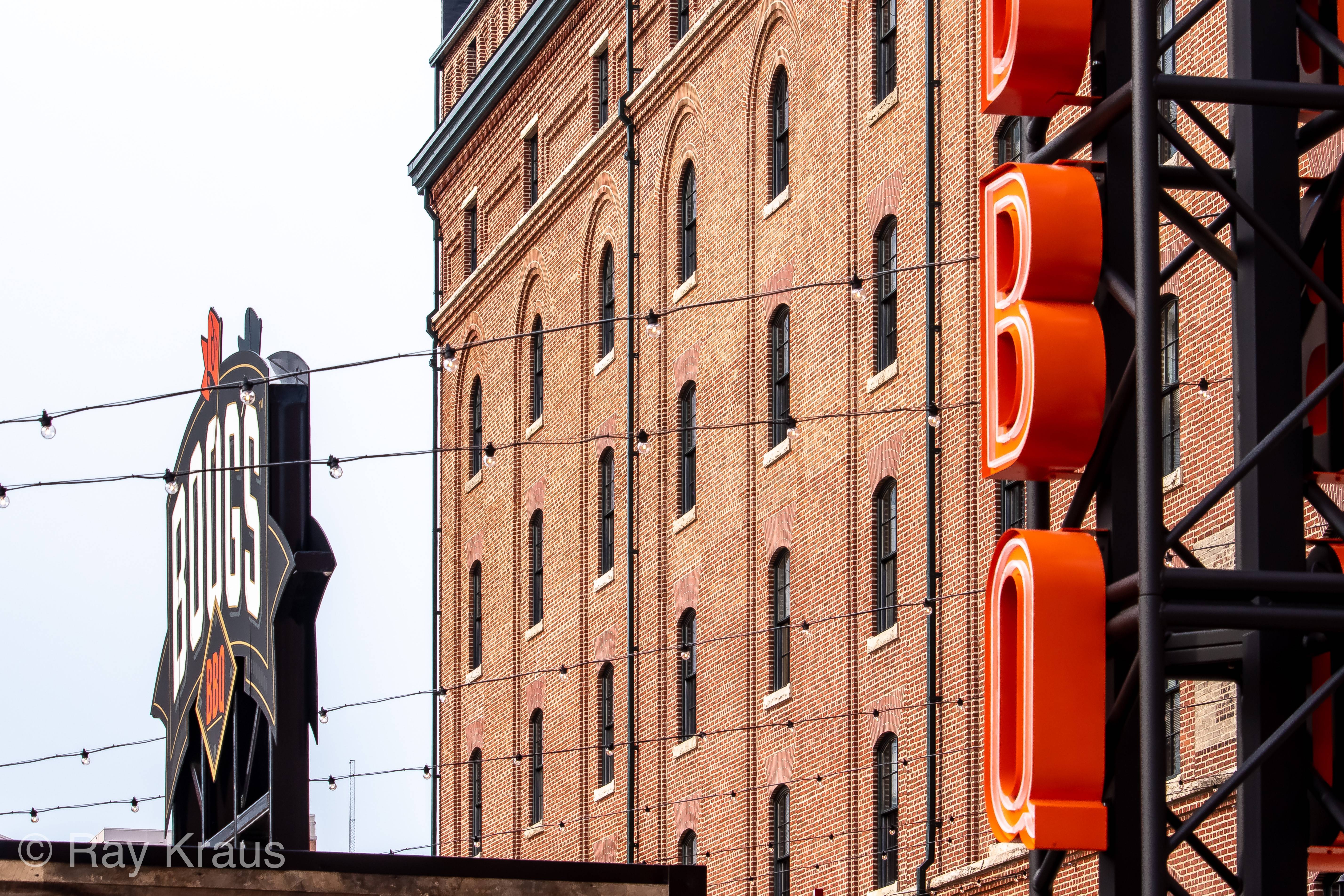Historic Camden Yards
There is a statue of young George Herman Ruth, Jr., at the intersection of Eutaw and West Camden Streets. He is looking toward the sky and dreaming of greatness. Behind the statue called “Babe’s Dream” is Baltimore’s revolutionary Oriole Park at Camden Yards.
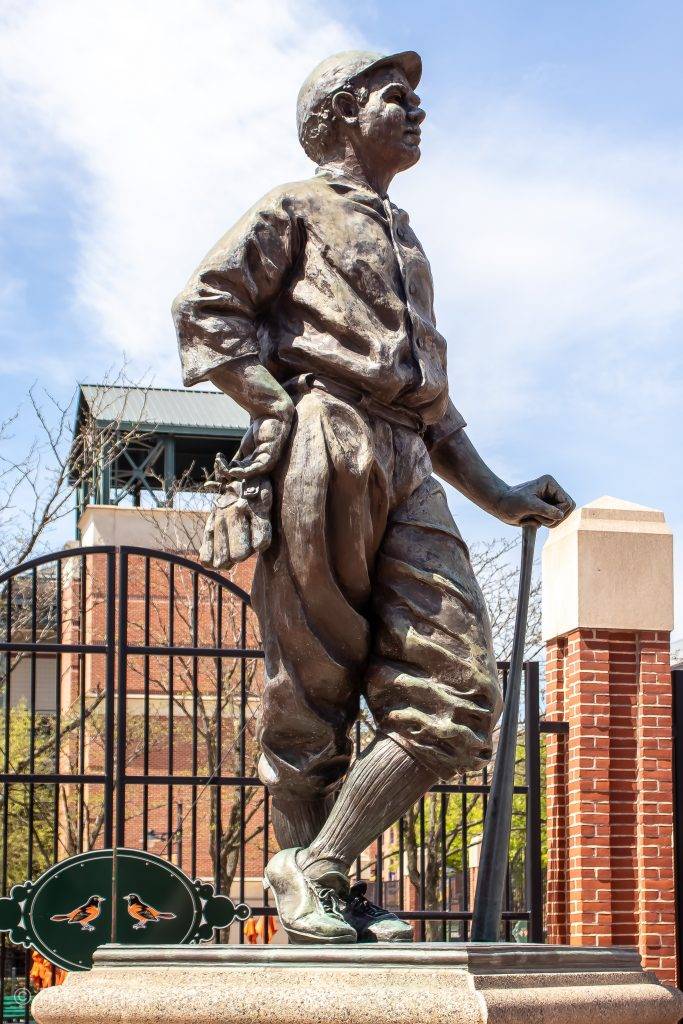
The ballpark abuts “Pigtown,” the historic neighborhood where “The Babe” was born. Ruth’s father ran a saloon located near what is now Oriole Park’s centerfield. When the stadium was under construction, the team asked archeologists to survey the area to see if there were any artifacts. They found a few bottles and dishes, but nothing noteworthy.1
Ruth’s birthplace – now a museum – is just a few blocks from the ballpark. The house is small, clean, and orderly. If one did not know better, they would assume that it was a happy home. It wasn’t happy, and neither is the current day Oriole Park.
Oriole Park at Camden Yards is a revolutionary ballpark distinguished by many unique elements. However, its beauty unsuccessfully camouflages many of the Orioles and baseball’s problems.
The Babe
The romanticized version of Ruth’s life is like the story of his statue in front of Oriole Park suggests. It’s the story of the always hopeful boy who perseveres through life’s challenging obstacles to realize his dreams of baseball greatness. At St. Mary’s Industrial School for Boys, young George meets Brother Mathias, who teaches him baseball. From there, he on his way to fame and fortune.
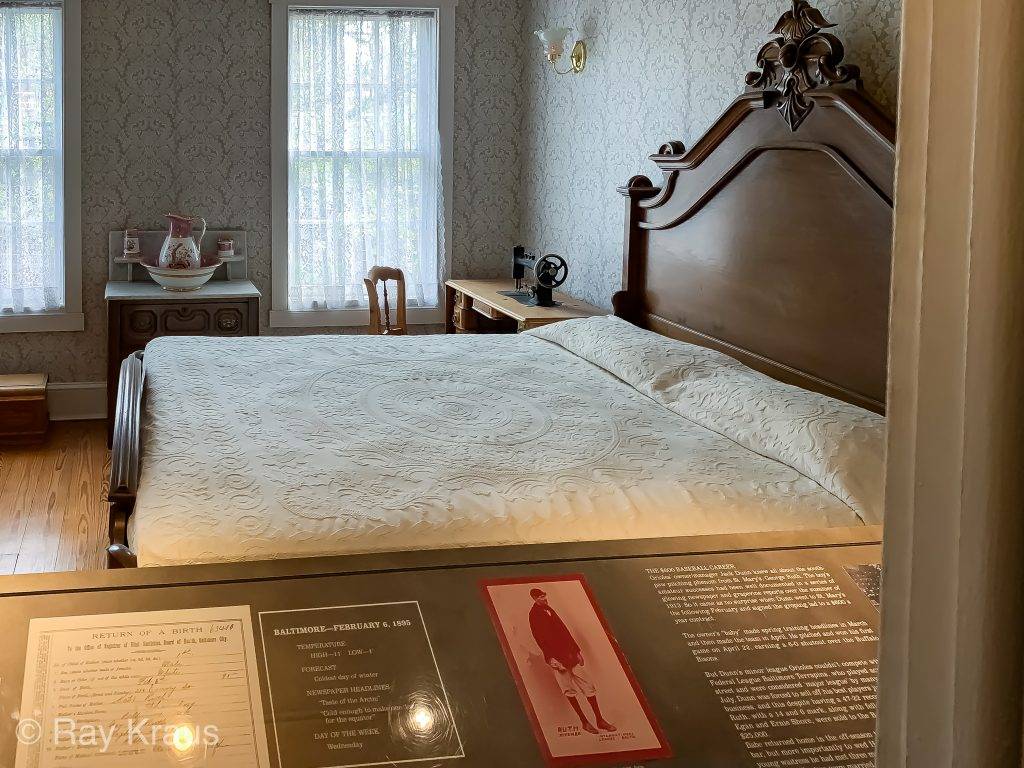
Ruth’s childhood was far more traumatic than the romantic legend suggests. His parent’s troubled marriage ended in divorce with allegations of his mother’s infidelity. His father was an alcoholic. George Jr., the eldest of seven children, felt that his parents blamed him for the loss of the five siblings that died in infancy. The family was poor and relocated often.
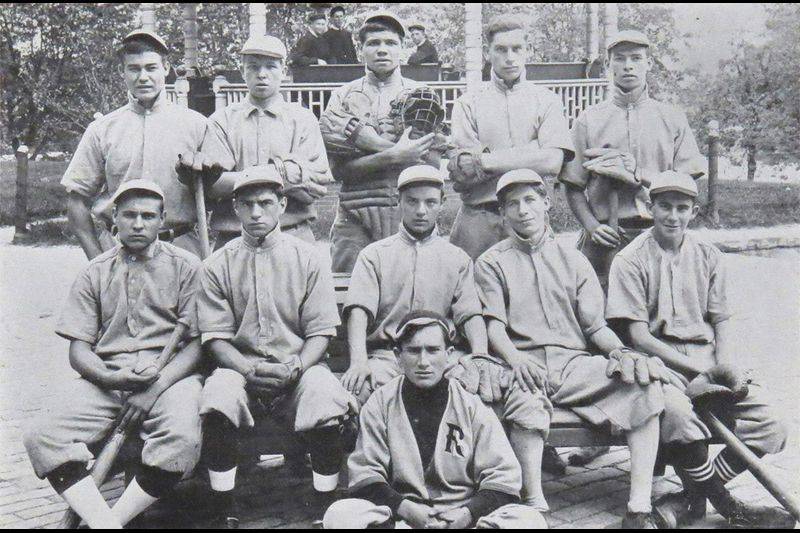
Baltimore Sun
George Jr.’s relegation to St. Mary’s was akin to parental abandonment. He rarely saw his parents after he moved there. Life at the school was harsh. Food was rationed, all activities were controlled, he slept in a large dorm with little privacy. These experiences colored the rest of the young George’s life.2

Ruth was America’s first and possibly greatest sports celebrity. The poor kid from Baltimore set extraordinary baseball records and commanded record salaries. However, a realistic view is that his outward gregarious behavior hid a sad and somewhat lost existence. Ruth was a womanizer, likely alcoholic, and died an old man at the young age of 53. Moreover, despite his legendary career, he never garnered the respect needed to realize his dream of managing a major league team.
Eutaw Street and Statues
Just past the “Babe’s Dream” statue is a gate that leads to Eutaw Street. This section of the busy street became a pedestrian thoroughfare that runs between the 120-year-old Baltimore & Ohio Warehouse and the outfield when the ballpark opened. On game days, the Orioles restrict Eutaw to ticketed fans who frequent the many eateries, including former Orioles great Blog Powell’s “Boog’s BBQ” and the souvenir stands. When the Orioles are not in town, the street is open to all pedestrians.
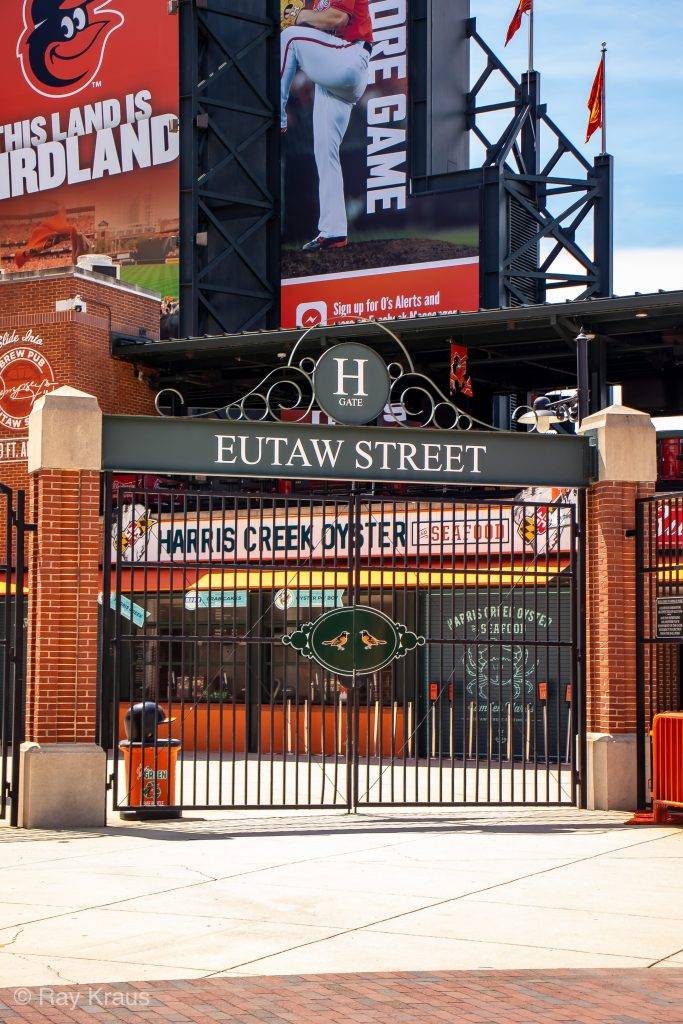
I visited Oriole Park at the end of May with an old friend, Joel, and his wife, Jennifer. I had been to the Babe Ruth Birthplace Museum a few weeks earlier, during my Jackie Robinson Day trip to Philadelphia. Jennifer, Joel, and I enjoyed Boog’s Barbecue, explored the area, and had a great time.
Later we walked behind center field to Legends Park, a courtyard and picnic area that was added on the park’s twentieth anniversary to honor six Orioles greats who helped the team dominate baseball for almost two decades. In it, there are statues of manager, Earl Weaver and players Jim Palmer, Frank Robinson, Brooks Robinson, Eddie Murray, and Cal Ripken, Jr.

Unfortunately, those glory days were a long time ago. But for a brief period, the baseball in Baltimore was better than almost anywhere else.

The Orioles
Origins
There have been teams named the Orioles in Baltimore since 1894. From 1894 to 1953 they were mainly a minor league club that played in the International League. However, for a short period, from 1914 to 1916 the Orioles joined the upstart Federal League as it tried to become a third major league. 3

Famously, the local 19-year old kid named George Herman Ruth, Jr. joined the team in 1914. Since Ruth was so young, Jack Dunn, the team’s owner, had to become his legal guardian to complete the contract. Due to Ruth’s youth, lack of experience, and round face, his Orioles teammates referred to him as “Jack’s newest babe. Ruth was from then on known as “Babe Ruth,” and the rest is history. 4 Ruth was sold to the Boston Red Sox later that year.
When the Federal League folded in 1916, the Orioles rejoined the International League where they played until 1953. In 1954, the historically bad but major league moved to Baltimore and became took the team’s name. The minor league Orioles moved to Richmond and became the Richmond Virginians. 5
The St. Louis Browns

Look Magazine
The Browns were a losing franchise best known for surprising behavior, especially when Bill Veeck owned the team. In the early 1950s, Veeck used a series of promotional stunts to draw fans to the ballpark. Most memorable was in 1951 when he hired the very small Eddie Gaedel to appear as a pinch hitter. To further the comedy, Gaedel, who was only 3 feet 7 inches tall, wore uniform number “1/8.” As expected, Gaedel walked on four pitches, all high.

AP Photo
Another time, Veeck held “Grandstand Managers Day,” where fans held placards to vote on the manager’s decision.

During World War II – before Veeck bought the team – there was such a shortage of players that the Browns needed to employ a one-armed outfielder named Pete Gray. The previous year the Browns won their only pennant, an example of the weak competition caused by the war.

Although the Browns played in St. Louis for half a century starting in 1902, by the 1950s, they faced the same issues that the Boston Braves, Brooklyn Dodgers and New York Giants did. None could compete with the more popular teams that they shared their cities with and needed new homes. Specifically, the Browns could not profitably exist in St. Louis with the more popular Cardinals. Veeck’s first choice was to relocate to Milwaukee, but American League owners denied the proposal. The baseball establishment didn’t like Veeck and thought that denying his move would force him out of baseball. The team’s move to Baltimore was contingent on the disliked Veeck’s agreement to sell his controlling interest in the organization. 6

Clarence B. Garrett – Baltimore Sun
The Oriole Way
”The winning tradition, by the reckoning of baseball executives who were running the team in the glory days, that came to be known as The Oriole Way – a code phrase for a coherent philosophy of evaluating and training the players, an insistence upon the highest standards of professionalism and the shrewd scouting and consistent development of a seemingly inexhaustible supply of blossoming stars in the organization’s farm system”
Bruce Buursma – “Whatever Happened to ‘the Oriole Way’?” 7

Under new ownership and management, the lowly & sometimes whimsical Browns transitioned into a powerhouse in Baltimore. The resurgence started with their philosophy referred to as the “Oriole Way” that entailed superior scouting and player development. Adhering to this philosophy, the Orioles stocked their farm system with the young talent that drove their future success. Then in 1965, they traded one of these players, their former Rookie of the Year, Milt Pappas to Cincinnati for established slugger Frank Robinson. Although the trade wasn’t quite as bad as people remember, many still refer to it as one of the worst in history.8
In his first year with the Orioles, Robinson won the Triple Crown, became the first man to win the MVP in each league, and led the team to their first World Championship.9 More wins would follow. Between 1966 and 1983, the Orioles won seven division titles, six pennants, and three world championships. Moreover, they won at least 90 games 16 times, had only one losing season, and held the best record in the majors. 10
Fall From Grace
Although the Orioles of the 1960s and 70s were successful on the field, they were only a breakeven investment for their owner, Jeff C. Hoffeberger. The Orioles simply couldn’t compete for the city’s affections with the more popular football team, the Baltimore Colts. However, since Hoffeberger was the head of the National Brewing Company, there were other financial rewards. While the team did not generate a great return, they were “an excellent promotional vehicle to sell beer.” 11 However, when Carling Brewery bought the company in 1976, the Orioles promotional capabilities were no longer needed.

Carling sold the team to Edward Bennett Williams in 1979 for $12 million. When Williams died in 1988, his family sold the team to junk bonds dealer, Eli Jacobs for $70 million. However, Jacobs encountered financial issues in 1991 and in 1993, declared bankruptcy. As a result, he sold the team to Peter Angelos, the team’s current owner, for $173 million.

Through the ownership changes, the Orioles lost their direction. Although they made the playoffs in 1997, 2012, 2104 & 2016, they’ve not won a championship since 1983. Over the years, they’ve lost their focus on the fundamentals they taught when they developed young players. The farm system is now one of the worst in baseball. Moreover, they’ve made bad trades and poor free agent acquisitions. Finally, they can’t compete financially with their more powerful division rivals, the Yankees and Red Sox. It’s difficult for them to attract and keep good talent.
Non-competitive Behavior – “Tanking”
In 2019, the Orioles had a division worst 54 wins, 108 loss record. They finished 49 games behind the division-winning Yankees. In 2018, they were even worse, finishing with a record 47 and 115. They are firmly in the middle of a total rebuild, which some refer to as “tanking.”

“Tanking” is the now popular strategy where teams trade all their good players, don’t invest in new ones, and do everything they can to lose. Losing earns better draft choices. The goal is to amass a large group of good prospects who will help reset the team’s fortunes. Meanwhile, the owners save money from reduced payroll costs.
The model for successful tanking is the Houston Astros, who lost 300 games between 2011 and 2013. Their drafts started to pay off in 2015, and they won the World Series in 2017. 12
However, this non-competitive behavior is not good for the game. Baseball attendance has declined each year for the past five years, as many teams have adopted the Astros’ strategy. 13
Noncompetitive Behavior Doesn’t Work
Moreover, there is mounting evidence that the strategy does not work:
“The idea of trying to lose 100 to 115 games, while claiming it’s a long-term plan for glory, always has been a long-shot notion, seldom born out in actual baseball experience. Of the current 30 clubs, 20 in the past 50 years have not lost more than 200 games over consecutive seasons, at least not after you exclude their early expansion-team days. Yet those 20 teams have won 33 of the past 50 World Series, exactly the ratio you’d expect if there was no difference between having a Horror Era and never being truly awful at all.”
Thomas Boswell – “Tanking by MLB teams isn’t a strategy. It’s fan abuse” 14
So far, the strategy is certainly not working for the Orioles:

“Rebuilds take time, but the Orioles have finished last in the A.L. East for three consecutive seasons and appear destined for a similar fate in 2020. There is some impact talent coming, but not a lot of it. The major-league roster has been almost entirely stripped of assets, and the remaining pieces are almost surely not going to net any impact talent in return.”
Jeff Wiser – “From the Outfield Grass: Orioles’ Tank Still Running On Fumes” 15
I’m sure Orioles fans long for the glory days when they watched so many winning teams. They remember fondly the 25 years between Brooks Robinson and Cal Ripken, Jr’s rookie years when so many great players came through the team’s farm system.
Oriole Park at Camden Yards
“Those who know the story best like to refer to the ballpark’s origin as the perfect convergence of people, circumstance and time. There was Lucchino, the team president, who wanted an old-style baseball park with modern amenities. There was Maryland governor and former Baltimore mayor William Donald Schaefer, who wanted to attract visitors and development to the city’s blighted inner harbor. There was a city and a fan base that had lost its NFL team, and thus was more willing than most to break the mold and fund a stadium that would host only one tenant.
Bill King – “Janet Marie Smith’s passion, personality and artistic eye helped redefine sports architecture” 16
While the Orioles’ dominance on the field was waning, they were revolutionizing baseball off of it.
By the early 1980s, it was clear that the Orioles needed a new stadium to ensure consistent attendance. The Orioles’ success in Baltimore was especially crucial to the city since its other professional teams had recently abandoned it. Their NBA franchise, The Baltimore Bullets, moved to Washington DC in 1974.17 Even more traumatic, the NFL Baltimore Colts moved to Indianapolis in 1984. Under the circumstances, “the loss of the Orioles would be a crushing blow to the pride of Baltimore, which would no longer be viewed as a ‘big league’ city and likely suffer economically.” 18
Throughout the decade, then-current owner Edward Bennet Williams negotiated with the city to garner support for the new stadium. Approvals and financing were in place when Williams died in 1988.
Larry Lucchino’s Vision
At the time, sports facilities were the multi-purpose variety. These stadiums could accommodate baseball, football, and other sporting and entertainment events. For example, the Toronto Blue Jays were about to open SkyDome, “a futuristic stadium with a retractable roof and a hotel overlooking the field” 19 when planning for Oriole Park began. Tropicana Field in St. Petersburg opened the year after SkyDome with somewhat similar features. While these facilities were efficient investments, they were boring and had little appeal.

SkyDome now Rogers Centre 
Tropicana Field
New Comiskey Park was the next stadium planned to open after Tropicana Field and just a year before Oriole Park. Orioles president Larry Lucchino hated its design when HOK Sport, the architects for both the Chicago and Baltimore projects, showed him a model. Lucchino “tore the model apart,” since he considered it “antiseptic” and “undistinctive.”20
”We just ripped one piece out of it after another,” he said. “I said, ‘We don’t want this, we don’t want that.’ One of the architects said, ‘Larry, do you have any idea how much these models cost?’ I said, ‘No, but we’re trying to make a point.’”
Thom Loverro – “MLB’s unsung hero made ballparks fun again”21
Lucchino wanted something different. He wanted “an asymmetrical, old-style ballpark that took cues from its surroundings.” 22 In short, he wanted to recreate the old-time downtown ballparks, but with modern amenities.

Revolutionary Design
“Oriole Park is state-of-the-art, yet unique, traditional and intimate in design. It blends with the urban context of downtown Baltimore while taking its image from baseball parks built in the early 20th century. Steel, rather than concrete trusses, an arched brick facade, a sun roof over the gentle slope of the upper deck, an asymmetrical playing field, and natural grass turf are just some of the features that tie it to those magnificent big league ballparks built in the early 1900s. Ebbets Field (Brooklyn), Shibe Park (Philadelphia), Fenway Park (Boston), Crosley Field (Cincinnati), Forbes Field (Pittsburgh), Wrigley Field (Chicago), and The Polo Grounds (New York) were among the ballparks that served as powerful influences in the design of Oriole Park.
Orioles.com “Oriole Park/History”
The result was a design that changed baseball history.
From the time that Oriole Park opened in 1992, 21 additional new parks opened. Most of these incorporate design elements that were popularized by Oriole Park. 23 Moreover, Lucchino and lead architect Janet Marie Smith supervised some of these other revolutionary projects. When Lucchino became president of the San Diego Padres, he hired Smith to work on the new Petco Park.
He then moved to the Boston Red Sox and was instrumental in the decision to remodel Fenway Park instead of replacing it. “Over the course of a decade they spent $285 million resurrecting a baseball landmark that had been given up for dead.” 24
It’s too bad, the Yankees didn’t follow their lead and remodel Yankee Stadium rather than replace it.
Repeatable Design Elements
Elements of Oriole Park’s design flow from ballpark to ballpark.
For example, Fenway Park’s concession area that connects to the enclosed Jersey Street is very similar to Eutaw Street. Similarly, these same features are found at St. Louis’s Ballpark Village and Atlanta’s Battery.

Busch Stadium’s Ballpark Village 
Fenway Park’s Jersey Street
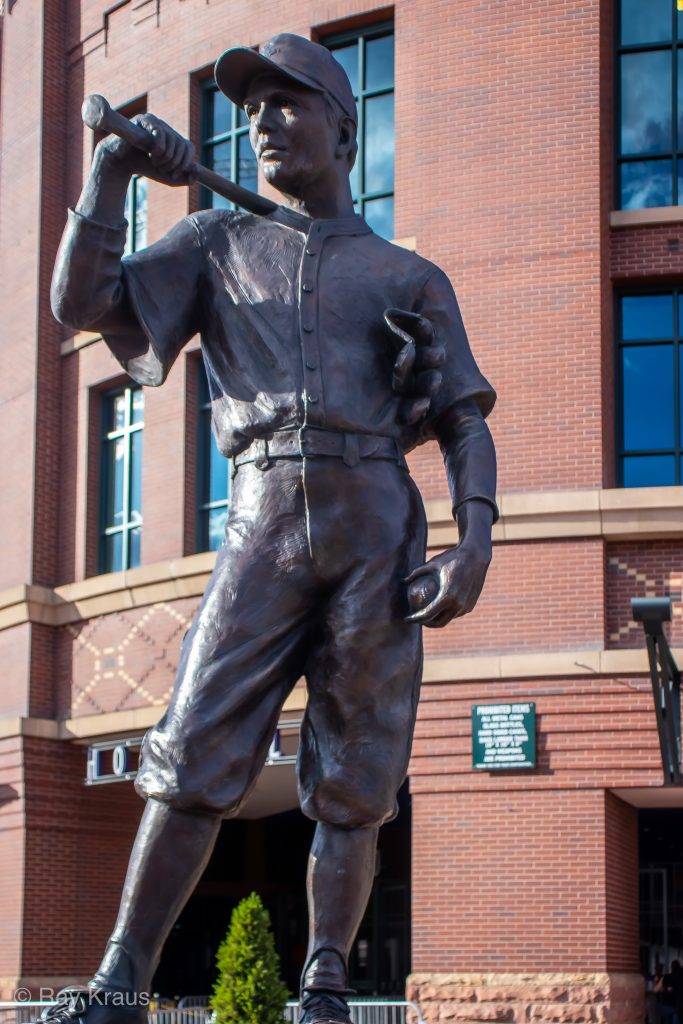
Most of the new ballparks are either brick or stone, similar to Oriole Park. The bronze statue called “The Player” in front of Coors Field’s brick facade is very similar to Oriole Park’s “Babe’s Dream.”
Finally, Smith used the now iconic, 120-year-old Baltimore & Ohio Warehouse as the centerpiece of the park’s design.
“The thing about the warehouse: It’s real,” Smith said, extending both hands to make the point. “That’s one thing I love about having it here. It gave us a reference point that dictated virtually everything else — from the field dimension to the vertical scale of the building to the brick and the steel palate and the seat colors. … The warehouse, more than anything, was like our clue of what to do.
Bill King – “Janet Marie Smith’s passion, personality and artistic eye helped redefine sports architecture” 25

Similarly, when Lucchino moved on to the Padres, he pushed for the new downtown ballpark. He decided that instead of demolishing the Western Metal Supply Co. Warehouse, it would be the cornerstone of the stadium. “This is what is going to make this ballpark special, this will make it unique. I don’t think this can be duplicated.” 26

“Someday the Orioles Will Deserve Camden Yards”
Camden Yards is historically located & exquisite. Most significantly, it’s a revolutionary structure. In so many ways, it is the model of all the ballparks built after it. It is one of the most beautiful ballparks in the country and one that all fans should visit at least once.
However, the Orioles are now a struggling team as a result of years of bad management and ownership. Moreover, their attempt at “tanking” is a baseball wide epidemic that is causing attendance to diminish. The glory of the park masks the problems with the team that calls it home.
On my way out of the park, I gave a silent nod to the statue of young Babe Ruth. Hope springs eternal, old baseball fans can dream little boys’ dreams, and as my friend, Joel says: “someday the Orioles will deserve Camden Yards.”
I couldn’t agree more.

- “Babe Ruth’s Baltimore Beginnings,” Preservation Maryland, February 6, 2017
- See Jane Leavy “The Big Fella, Babe Ruth and the World He Created” Harper, 2018, for a great, thorough discussion of Ruth’s complicated history.
- Wikipedia – Baltimore Orioles (minor league)
- BabeRuth.com – Biography Page
- Wikipedia – Richmond Virginians
- See Wikipedia – “Baltimore Orioles”
- Bruce Buursma “Whatever Happened to ‘the Oriole Way’?” Chicago Tribune, May 1, 1988
- See Wikipedia – “Baltimore Orioles”
- See Wikipedia – “Baltimore Orioles”
- Warren Corbett, “1970 Baltimore Orioles: The Oriole Way,” Society for American Baseball Research, April 24, 2012
- Quote and much of the history in this section is from “Baltimore Orioles L.P.” Reference for Business.
- Thomas Boswell, “Tanking by MLB teams isn’t a strategy. It’s fan abuse,” Washington Post, July 26, 2019
- Craig, Calcaterra, “Tanking teams are killing attendance,” NBC Sports, September 6, 2019.
- Thomas Boswell, “Tanking by MLB teams isn’t a strategy. It’s fan abuse,” Washington Post, July 26, 2019
- Jeff Wiser, “From the Outfield Grass: Orioles’ Tank Still Running On Fumes,” Baseball Prospectu, December 3, 2019
- Bill King “Janet Marie Smith’s passion, personality and artistic eye helped redefine sports architecture,” SportsBusiness Journal, March 26, 2017
- Adam Augustyn “Washington Wizards,” Encyclopedia Britannica
- “Baltimore Orioles L.P.” Reference for Business.
- Noah Trister “THE CAMDEN EFFECT: At 25, ballpark’s legacy is large in MLB,” A.P. News, March 31, 2017
- Thom Loverro “MLB’s unsung hero made ballparks fun again,” Washington Times, May 23, 2017
- Thom Loverro “MLB’s unsung hero made ballparks fun again,” Washington Times, May 23, 2017
- Bill King “Janet Marie Smith’s passion, personality and artistic eye helped redefine sports architecture,” SportsBusiness Journal, March 26, 2017
- Noah Trister “THE CAMDEN EFFECT: At 25, ballpark’s legacy is large in MLB,” A.P. News, March 31, 2017
- Bill King “Janet Marie Smith’s passion, personality and artistic eye helped redefine sports architecture,” SportsBusiness Journal, March 26, 2017
- Bill King “Janet Marie Smith’s passion, personality and artistic eye helped redefine sports architecture,” SportsBusiness Journal, March 26, 2017
- Bill Center “Larry Lucchino Was Driving Force Behind Petco Park.” Friarwire, March 2, 2017

